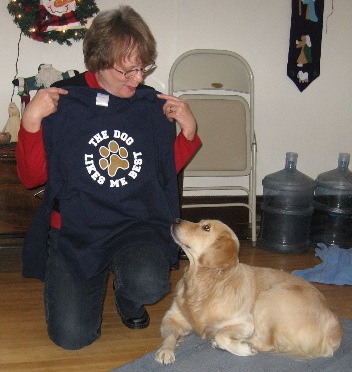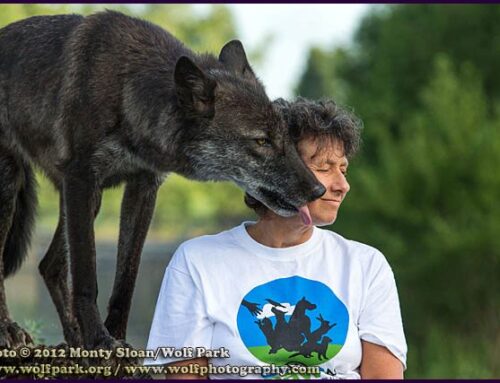Recently Jack, co-caretaker of Mollie, wrote to share what has been unfolding with Mollie, his fearful dog.
Too often the information we get regarding changing dog behavior comes in the form of programming for television in which all the hard work, set-backs, struggles, frustrations and failures, are left on the editing room floor. Between commercials we see what is tantamount to a miracle. Bad dog to good dog right before our eyes and despite the ‘don’t try this at home’ and other notes of caution and warning, it’s hard not to feel disappointment in our own dogs’ progress and our own abilities to foster it.
When we speak to owners and trainers of fearful dogs we discover that it is indeed a long haul for many of these dogs. The word ‘patience’ has taken on a whole new meaning for us.
I asked Jack if I could share Mollie’s journey with you and thank him for his willingness to do so. Here is his reply-
Feel free to share whatever info you think would be of benefit to others.

This is a follow-up to a consult we had with you after buying the Fearful Dog Ebook last September. Our names are Jack and Jackie and our dog’s name is Mollie. We live in California. We got her from an organization that rescues golden retrievers.
She was 4 yrs old and had spent her whole life in a breeding kennel. She was very fearful and shut-down/depressed. A week or so after we got her, she had a gran mal seizure. This led to immediate changes in her diet from commercial to home cooked foods with good results — no additional seizures. However, subsequently we discovered that she has a chronic renal condition – one kidney completely atrophied and shut down, the other trying to hold its own, but lab blood tests show abnormal readings. After months of consultations with veterinary nutritionists, additional diet modifications and various treatments with medications, it appears her renal functioning, while still impaired, has improved and stabilized. The vets tell us that her current functioning should yield a long life.
Along with handling these health issues during the past 6 months or so, we have of course been dealing with her fearfulness. We are very happy to report that she is no longer the withdrawn shut-down dog that she used to be. At first, it was not possible to get any positive responses out of her…shied away, turned her head, slunk to the ground, no eye contact, lying “hidden” in the corner all the time, etc, etc, whenever we would try to pet her or engage her in any way. Today, she has bright eyes, frolicks off-leash when we go for walks on our rural roads 2x a day, comes when called, has learned to come to us and sit at attention whenever an occasional car comes by, remains completely relaxed (even seemingly asleep) when we come to pet her (particularly likes to have the top of her head rubbed with pressure — pushes back up against our hands) .. “talks” to us when she wants to go out and over-all appears to be comfortable with us and even strangers. All of these mannerisms are more accentuated with Jackie than with me, but she continues to interact with me more and more as time goes on.
Now, she still doesn’t “play” very much…toss around chew toys, fetch a tennis ball, get into tug-of-wars with toys, etc. To our mind, it appears that she wants to, but doesn’t know how. She’ll show some spark, jump into emptying out a basket of toys we have, only to quit after less than a minute. When we try to engage her directly, she shows interest, wags her tail, prances around a bit, but then doesn’t really do anything. As I said, these moments typically last less than a minute and then she usually just lies down and looks at us.
We much appreciate the supportive help and suggestions we obtained from you. We were lost – you got us going in the right directions. I want to emphasize and confirm with you one element of assistance you emphasized which we consider invaluable and completely pertinent. That is….PATIENCE. Of all the things that people working with fearful dogs might do, maintaining patience is essential.
If you would indulge me, I would expand this admonition a bit so that the instructional phrase becomes….”ACTIVE Patience”. To our minds, this isn’t the kind of patience in which you sit around doing nothing and just wait for the dog to become less fearful. This is the kind of patience in which you steadfastly and consistently actively observe and study your dog and offer it your kindness and safety by whatever means you’ve developed and in whatever way it seems to fit and then be alert so that you will be in position to actively accept and welcome the dog’s positive responses – as slight or minimal as they might be. This is what we’ll continue doing with Mollie — looking forward to the day she licks our faces, chases and fetches the ball and engages in a tug-of-war with one of her toys.
Thanks again,
Jack, Jackie and Mollie





